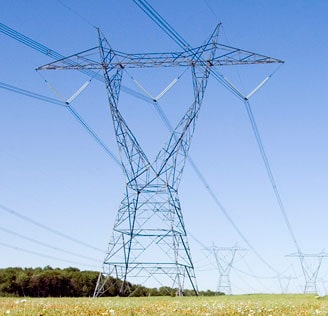Alberta’s weighted average Power Pool price for November is currently $38.44/MWh. Relative to October’s month-end price of $63.21/MWh, this is a decrease of 39% or $24.77/MWh. October’s price volatility was primarily linked to planned outages at the interties, which returned to full capacity at the beginning of November; since that time, we have experienced less volatility, as the supply cushion within the province has increased. Even still, there have been hourly periods during which the Power Pool price has elevated to over $100/MWh, coinciding with daily demand reaching its apex. This occurred on November 6th, at 6pm MST, when the daily demand was 10,561MW, causing the hourly price to reach $415.74/MWh. This extreme level of pricing was short-lived, and returned to normal the next hour. As a whole, hourly demand levels in the province have increased relative to October by 458MW or 4.8%.
The weighted average Hourly Ontario Energy Price (HOEP) is currently at 0.6¢/kWh for the month of November, a decline of 0.2¢/kWh or 25% from last week’s settle. This decrease in price is driven by mild temperatures, lower demand, and a supply mix less reliant on natural gas. The population-weighted daily average temperature this past week hovered just under 13oC, more than 7oC higher than November’s average temperature. Week-over-week, demand dropped 7% (13,993MW), with supply decreasing 4% (15,520MW). As a response to lower demand, expensive natural gas more than halved its supply (-58%, 436MW), with nuclear slightly increasing its baseload (+1%, 9,333MW), and solar increasing its supply (+40%, 72MW). Other sources have decreased their supply: hydro (-5%, 3,647MW), wind (-10%, 2,007MW), and biofuel (-10%, 25MW). With cooler, more seasonal, temperatures expected to set in, we expect HOEP to begin to creep up closer to 1.8¢/kWh, until strong cold fronts of the winter season set in and hike prices higher. Currently, with the first Global Adjustment estimated at 11.7¢/kWh, November’s total market price is 12.4¢/kWh.
In other electricity news, in the Ontario budget update last week, the government announced that it will subsidize a portion of the Global Adjustment costs, at a price of $1.3-billion over three years. This subsidy will begin January 1st, 2021, resulting in an estimated cost savings of 16% and 14% for Class A (industrial) and Class B (commercial) customers, respectively. This would effectively reduce electricity costs to an estimated 8.05¢/kWh for Class A and 14.3¢/kWh for Class B customers, in order to compete with average electricity prices paid in the United States. The goal of this subsidy is to reduce costs for large commercial and industrial rate-payers, to allow local businesses to focus on growth and recovery and to make Ontario more attractive to prospective businesses.
– Mark Ljuckanov, Energy Data Analyst / Ryan Cosgrove, Energy Data Analyst








Add comment